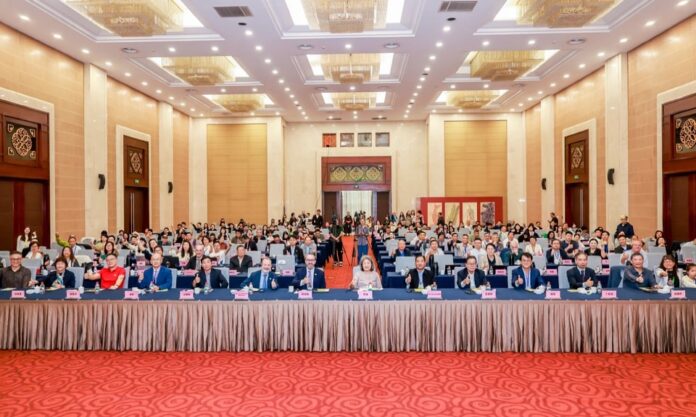How will we manage to feed a planet with approaching 10 billion people when the majority are under nourished? And what systems can be put in place to somehow perhaps address this? They are good questions. Hence a recent forum in Nanjing.
Held in the spacious and lush grounds of the Huadong Hotel next to the Jiangsu provincial government headquarters in Nanjing, the 9th Annual Good food Summit took place from 15-17 October, with the theme of “Embracing Frontier Science with Eastern Dietary Wisdom”.
At the heart of the issue is even if a global-energy transition away from fossil fuels occurs, food systems will cause the world to breach the Paris Climate agreement.
That’s problem A. Problem B is that a Planetary Healthy Diet (PHD) needs to be available, affordable, convenient, aspirational, appealing and delicious.
Shedding light on this possible food-systems transformation was the highlight of the Summit, namely recommendations from the EAT–Lancet Commission which could lead to a less resource and labour-intensive food system able to supply a healthy diet to 9·6 billion people, with modest impacts on average food costs.
However, such a transformation would have profound implications for what, how, and where food is produced, and for the people involved in these processes. For example, as a part of this restructuring, some sectors would need to contract (a 33 percent reduction in ruminant meat production) and others would need to expand (a 63 percent increase in fruit, vegetable, and nut production) compared with 2020 levels.
But it will come at a cost. Substantial financial resources, estimated between US$200 billion and 500 billion per year, shall be needed to support the transformation to such healthy and sustainable-food systems.
The recommendations also call for the eliminating of support for polluting practices or for foods, the over production of which drives poor health.
Appearing during the summit were representatives from progressive good-food initiatives such as the United Nations, World Health Organisation and the Global Food Banking Network, while The Nanjinger was also among the media, including others such as Southern Weekend, invited to field questions to some of the experts present.
But it was the reality of what a PHD would look like that hit hardest, putting the 3-day summit in to perspective.
The recommendations, for example, call for red meat to only be consumed as an 80–100 gram serving once a week or as small amounts in mixed dishes or soups, as is customary in many Asian recipes. As a reference point, 200 grams is a common weight for a steak.
It’s a sobering thought. But there can be little doubt that a fundamental shift in what we eat and how much it we consume is on the horizon. Only one question remains; can the change come quickly enough for global catastrophe to be averted?









